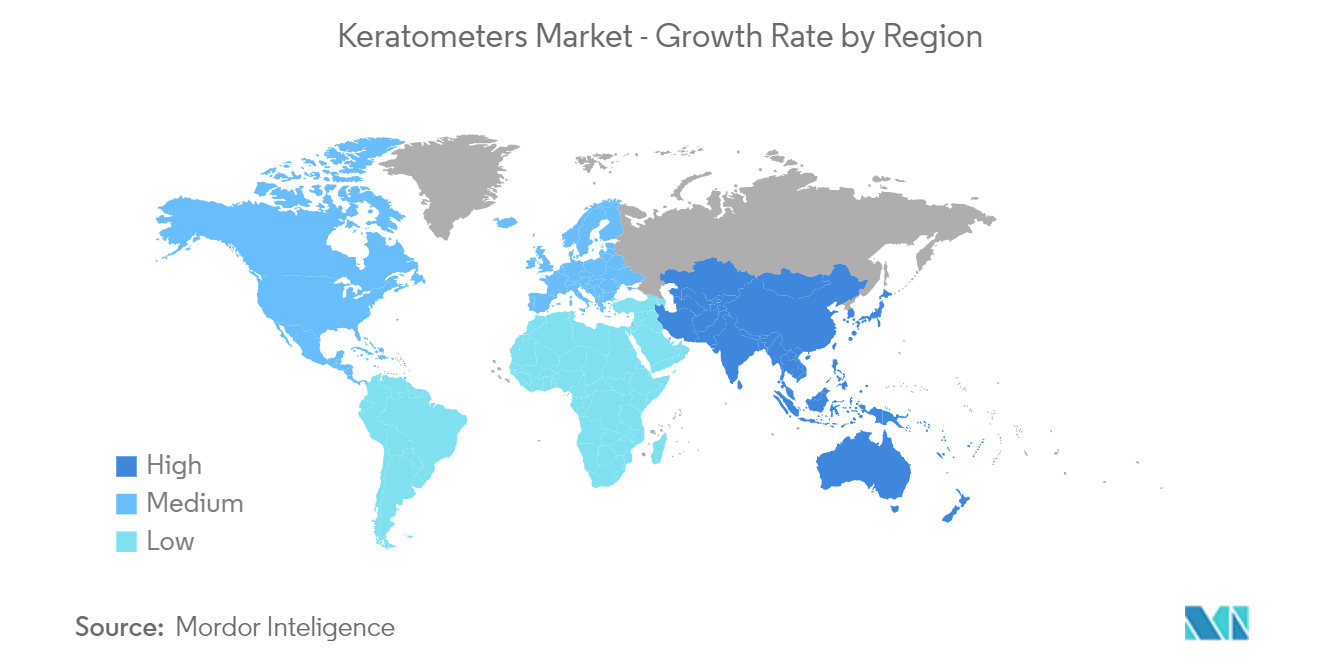Market Trends of Keratometers Industry
Hospitals are Expected to Hold a Significant Market Share Over the Forecast Period
The increasing number of hospitals is the primary factor for market growth. The number of hospitals is growing at a steady pace in various countries like the United States and Mexico. For instance, according to the American Hospital Association 2022 report, there are 6,093 hospitals in the United States. However, the Definitive Healthcare HospitalView product tracks 7,308 active United States hospitals as of March 2022. These hospital facilities are curated from 40 public, private, and proprietary sources. Increasing investment is another factor for market growth.
The report published by India Brand Equity Foundation in December 2021 stated that Foreign Direct Investment (FDI) inflows for the drugs and pharmaceuticals sector stood at USD 19.19 billion, according to the data released by the Department for Promotion of Industry and Internal Trade (DPIIT). FDI inflows in sectors such as hospitals, diagnostic centers, and medical and surgical appliances stood at USD 7.73 billion and USD 2.35 billion, respectively.
The same source stated that the Indian government plans to introduce a credit incentive program worth INR 500 billion (USD 6.8 billion) to boost the country's healthcare infrastructure. The program will allow firms to leverage the fund to expand hospital capacity or medical supplies, with the government acting as a guarantor. Such initiatives and investments would increase the end-user facilities by adopting various medical devices, including keratometers. Hence, the factors mentioned above are expected to drive the growth of the studied segment during the forecast period.

North America is Expected to Hold the Significant Share in the Market Over the Forecast Period
The North American region is expected to hold a significant market share over the forecast period. Factors such as investments, increasing eye disorders, and research studies will likely increase market growth. According to the NCHS at CDC in March 2023, the research funding for eye disease and disorders of vision was USD 1,070 million in 2021, which was increased to USD 1,097 million in 2022 and is estimated to be USD 1,163 million in 2023. It shows the increasing research funding on eye disease and vision disorders, which is expected to significantly impact keratometer usage, propelling the market's growth over the forecast period.
Keratometry measures the cornea's curvature to calculate corneal astigmatism along with posterior corneal astigmatism and posterior and anterior crystalline lens astigmatism, which is minimal in many cases. Astigmatism is the most frequent ammetropia. Increasing prevalence will increase the demand for keratometers, which is expected to boost the market's growth in the region. For instance, as per the report published by NVISION Eye Centers in December 2022, astigmatism occurs in about one out of every three people in the United States. In addition, farsightedness occurs in about 8.4% of the population over 40, and nearsightedness occurs in about 23.9% of the population over 40 years old. It shows the high burden of vision impairment, which increases keratometers' usage and propels market growth.


